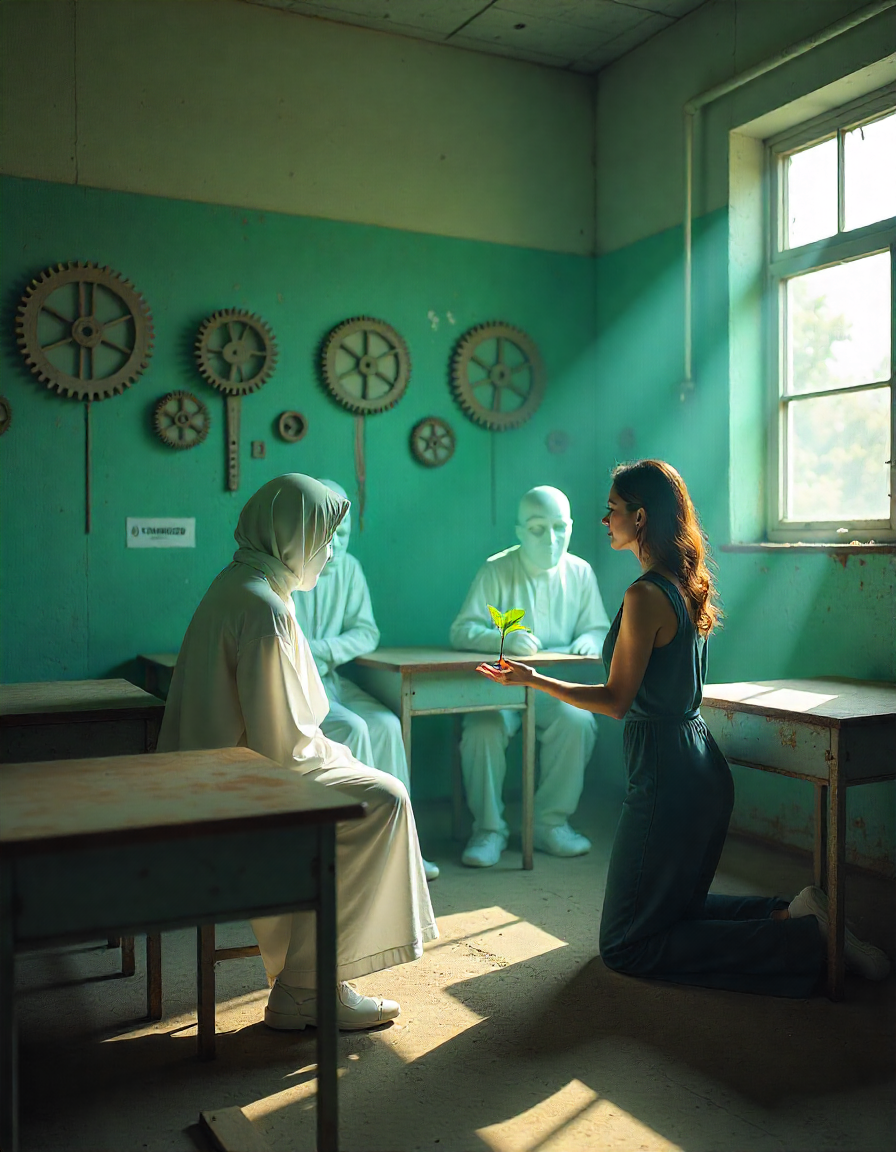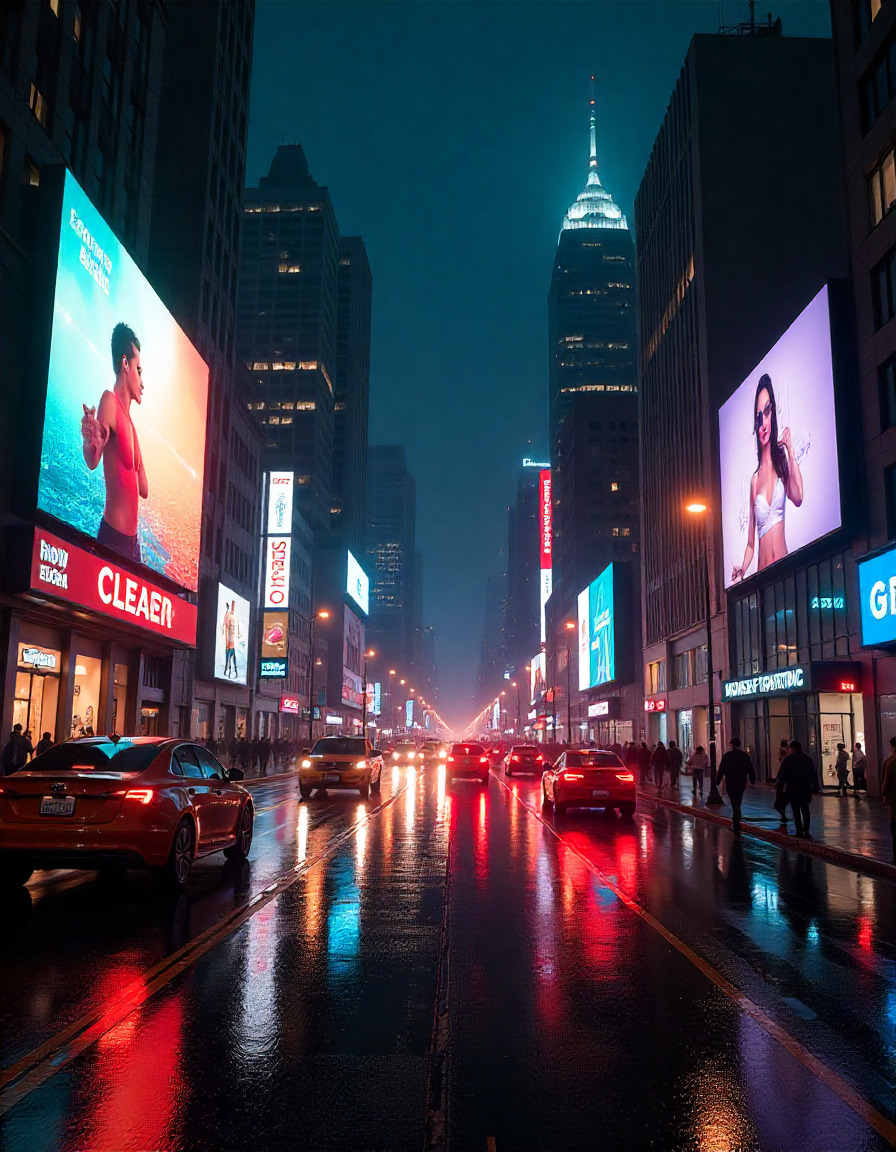Walk into any typical high school classroom, and you’ll witness a peculiar kind of haunting. Students sit in orderly rows, eyes fixed on screens or whiteboards, bodies present but minds elsewhere. Teachers move through scripted lessons, their voices echoing against walls plastered with motivational posters. It’s a scene of profound stillness—a stillness that masquerades as engagement but is often the quiet surrender of curiosity. We’ve built an education system so obsessed with measurement, efficiency, and control that we’ve engineered the humanity out of learning. The ghosts aren’t the students; they’re the living learners buried beneath layers of institutional machinery.
The Illusion of Order
Modern education operates like a factory: raw materials (students) enter at one end, processed through standardized curricula, testing, and grading systems, then exit as “finished products” with diplomas. This model was designed for the industrial age, a time when compliance and uniformity were valued over creativity. Yet, despite decades of research proving humans learn best through exploration, collaboration, and play, we cling to this assembly-line approach.
Consider the daily rhythm of most schools: bells dictating movement, rigid schedules fragmenting learning into 45-minute chunks, and a relentless focus on “covering” material rather than uncovering understanding. Students learn to sit still, raise hands, and memorize facts for tests—skills that serve them poorly in a world demanding adaptability, critical thinking, and resilience. The tragedy isn’t just what we’re teaching; it’s what we’re unteaching: how to ask questions, how to fail productively, how to find joy in the mess of discovery.
The Hidden Curriculum of Passivity
Beneath the official syllabus lies a more powerful lesson: the hidden curriculum of passivity. Students absorb subtle messages that learning is something done to them, not something they do. They learn to wait for instructions, to value right answers over deep inquiry, and to avoid risk because mistakes are penalized. This conditioning doesn’t end at graduation. It follows them into workplaces and communities, fostering a generation of adults who hesitate to innovate, challenge norms, or think independently.
The irony is stark: we claim to prepare students for the future, yet we’re training them for a past that no longer exists. The World Economic Forum reports that critical thinking, creativity, and emotional intelligence will be among the most in-demand skills by 2025. Yet our classrooms prioritize rote memorization and standardized testing—metrics that measure compliance, not competence.
Where Learning Actually Lives
Step outside traditional classrooms, and you’ll find vibrant ecosystems where learning thrives: maker spaces buzzing with invention, debate clubs where ideas clash and evolve, robotics teams iterating through failures, and community gardens where biology and ecology unfold hands-on. These spaces share three critical elements missing from conventional education:
1. Agency Over Compliance
When students choose their projects, set their goals, and assess their progress, learning becomes personal. At High Tech High in San Diego, students tackle real-world problems—designing sustainable housing, documenting local history, or publishing scientific research. They’re not passive recipients; they’re architects of their own understanding. The result? Deep engagement, intrinsic motivation, and work that matters beyond the classroom walls.
2. Embracing Productive Struggle
Learning is inherently messy. It involves confusion, false starts, and revision. Yet traditional schooling pathologizes struggle, treating mistakes as failures rather than opportunities. Contrast this with Finland’s education system, widely hailed as one of the world’s best. Finnish students spend less time on homework and testing but more time on play, exploration, and collaborative problem-solving. Teachers are trained to design “low-floor, high-ceiling” tasks—accessible to all but challenging enough to push boundaries. The goal isn’t ease; it’s efficacy.
3. Learning as a Social Act
Knowledge isn’t transmitted; it’s co-constructed. The most powerful learning happens in dialogue, debate, and shared discovery. The Reggio Emilia approach, pioneered in Italy, treats the classroom as a “third teacher.” Environments are designed to spark interaction, documentation makes learning visible, and teachers act as researchers alongside students. Children as young as three engage in long-term projects—exploring light, building cities, or creating theatrical performances—guided by their questions, not a preset curriculum.
The Cost of Dehumanization
The consequences of our machine-like system ripple far beyond academic outcomes:
- Mental Health Crisis: Anxiety and depression among students have surged, linked to pressure, perfectionism, and lack of autonomy.
- Erosion of Creativity: Sir Ken Robinson’s landmark TED Talk revealed that 98% of preschoolers score at “genius” levels on divergent thinking tests, but this drops to 32% by age ten—and just 2% by age fifteen.
- Teacher Burnout: Educators are leaving the profession in record numbers, exhausted by administrative burdens, standardized testing, and the loss of professional autonomy.
Reclaiming the Human Element: A Blueprint for Change
Transforming education isn’t about adding more technology or tweaking assessments. It’s about re-centering humanity. Here’s how:
1. Rethink Time and Space
- Replace bells with flexible blocks that allow deep immersion.
- Design classrooms as studios, labs, and workshops—spaces for making, not just sitting.
- Take learning beyond school walls: museums, neighborhoods, ecosystems.
2. Redefine Success
- Measure growth, not just achievement. Portfolios, exhibitions, and narrative assessments reveal more than test scores.
- Celebrate process: document drafts, iterations, and reflections.
- Value questions over answers. Create “I Wonder” journals where curiosity is the curriculum.
3. Restore Teacher Agency
- Treat teachers as professionals, not technicians. Trust them to design learning experiences based on their students’ needs.
- Invest in ongoing, collaborative professional development—not one-size-fits-all training.
- Reduce administrative burdens to free time for mentoring, innovation, and connection.
4. Center Relationships
- Prioritize advisory programs where students build long-term relationships with caring adults.
- Integrate social-emotional learning into daily routines, not as a separate “program.”
- Create cross-age learning communities where older students mentor younger ones.
Case Studies: Schools That Get It Right
1. The Met High School (Providence, RI)
Every student pursues internships based on their passions—from marine biology to journalism. Learning plans are individualized, and assessment happens through exhibitions and real-world projects. Graduation rates exceed 90%, with 75% enrolling in college—most first-generation.
2. Agastya International Foundation (India)
Mobile science labs and rural “creativity labs” bring hands-on learning to underserved communities. Children design experiments, build models, and solve local problems. The result? Sparked curiosity, improved critical thinking, and a love for learning that transcends textbooks.
3. XP School (Doncaster, UK)
Students work on interdisciplinary “expeditions”—real-world projects like creating a documentary on local history or designing sustainable housing. Assessment is through public exhibitions where students present their work to community experts. Engagement and achievement have soared.
The Unlearning We All Need
Reforming education isn’t just about changing schools; it’s about unlearning deeply ingrained beliefs:
- That learning is linear and predictable.
- That quiet classrooms equal effective teaching.
- that standardization ensures equity.
- That achievement matters more than growth.
A Call to Rehumanize
Education isn’t a machine to be optimized. It’s a garden to be tended. It requires patience, care, and respect for the wild, unpredictable beauty of human potential. The ghosts in our classrooms aren’t lost causes—they’re learners waiting to be seen, heard, and challenged.
The path forward isn’t revolutionary; it’s radical in its simplicity:
- See students as whole humans, not data points.
- Treat teachers as designers, not deliverers.
- Embrace learning as a living, breathing act, not a mechanical process.
When we do this, we don’t just improve education—we rekindle the very essence of what it means to learn: to be curious, to connect, to create, and to become more fully ourselves. That’s a lesson no algorithm can teach, and no machine can replicate. It’s time to bring the humans back to the center of the classroom.




